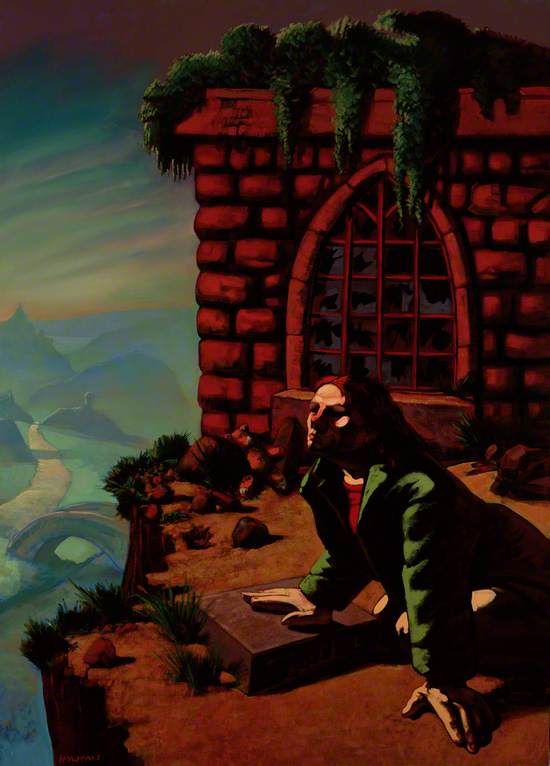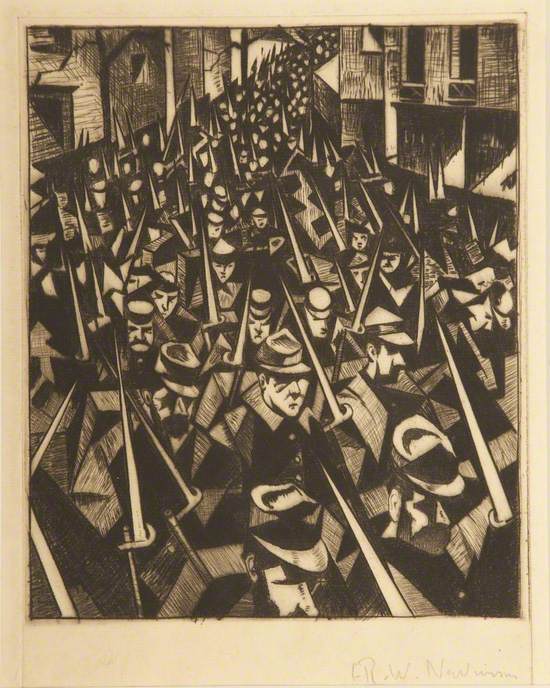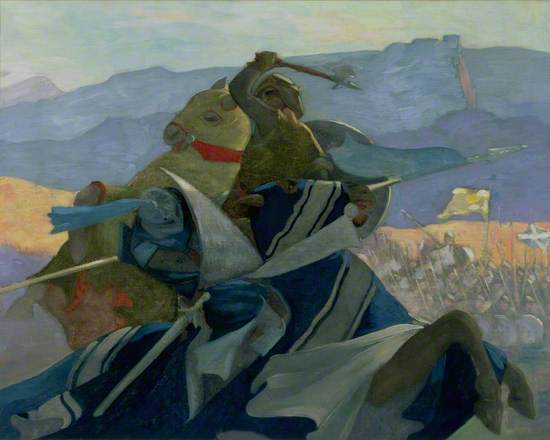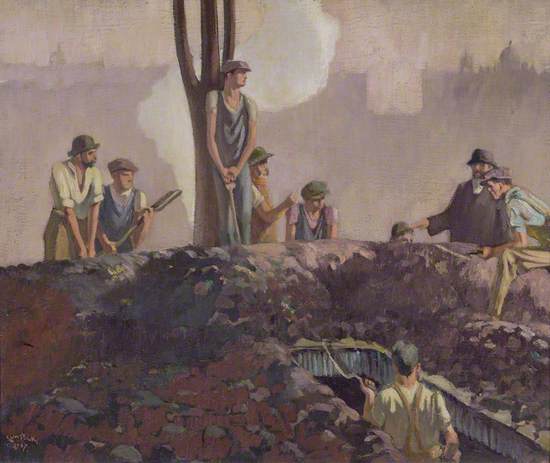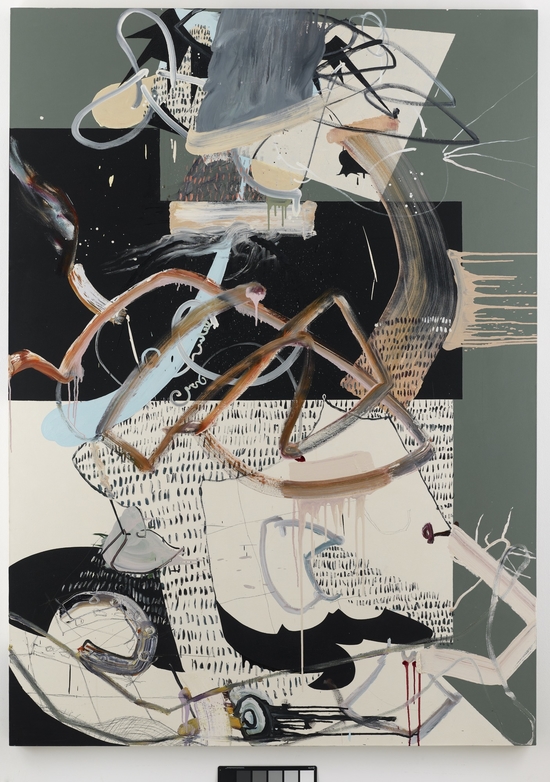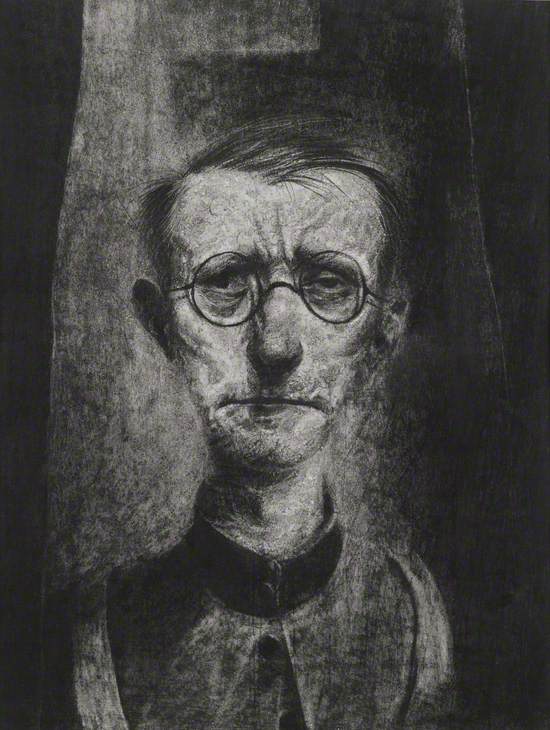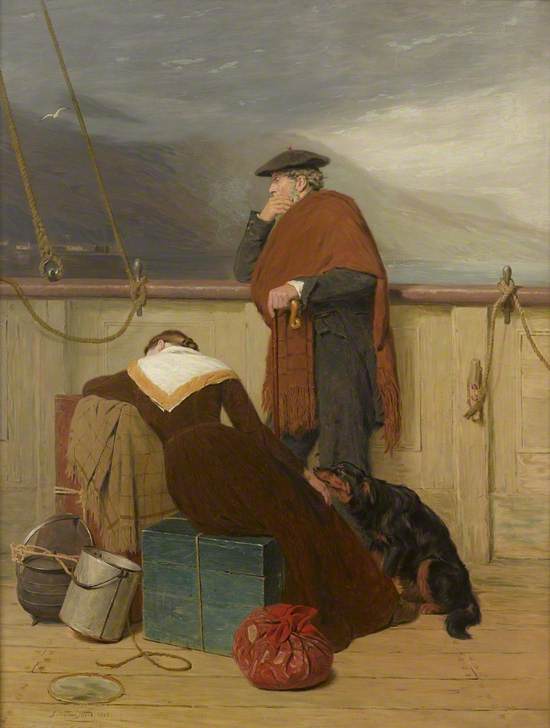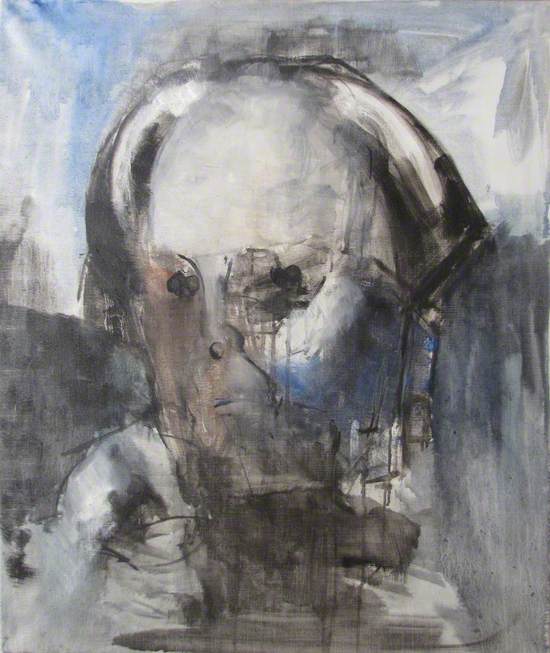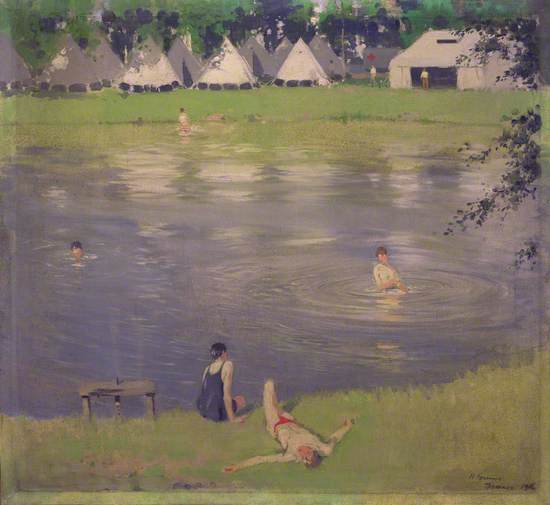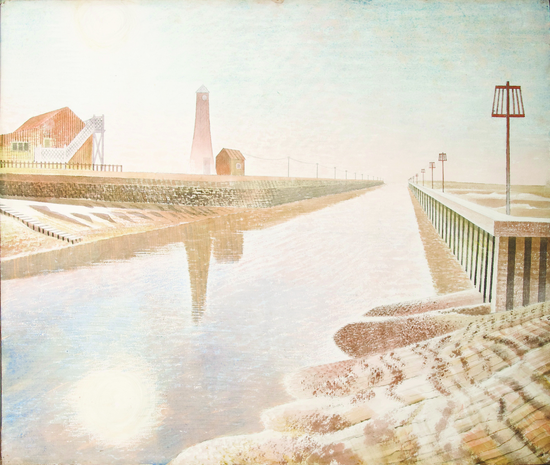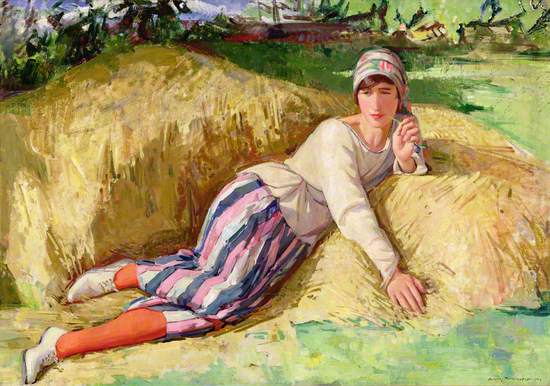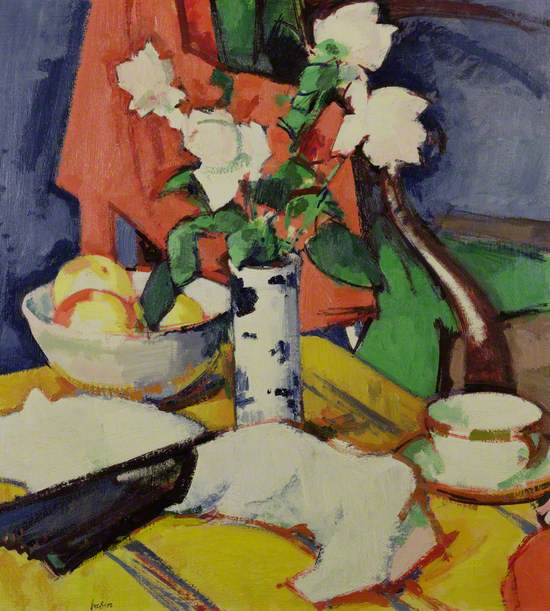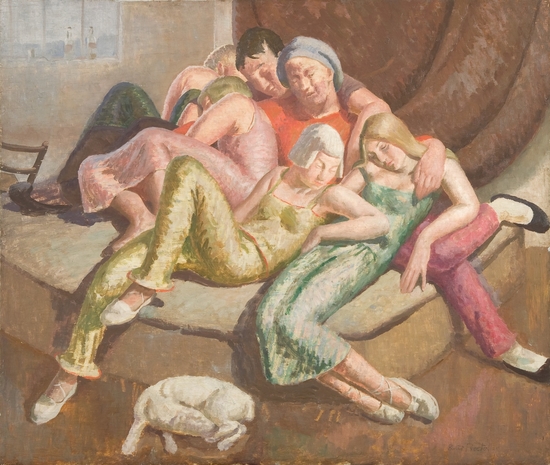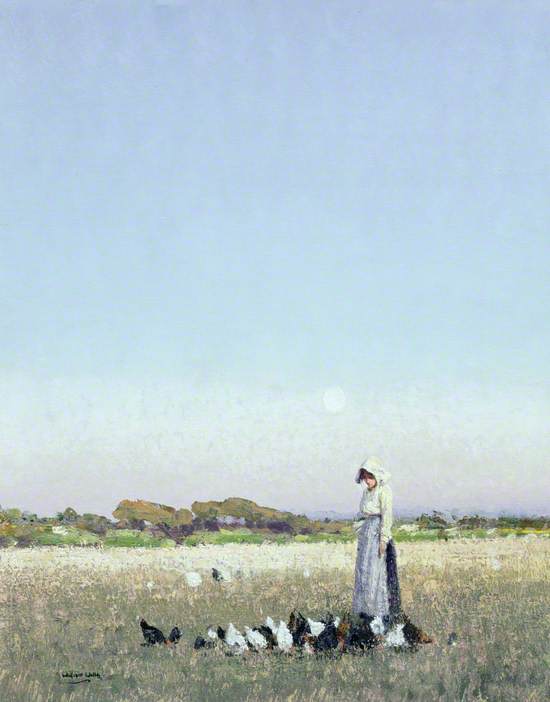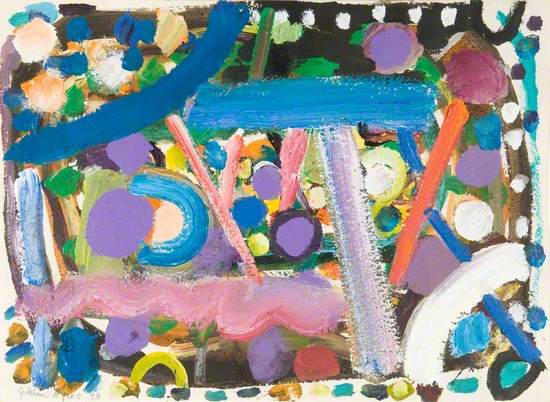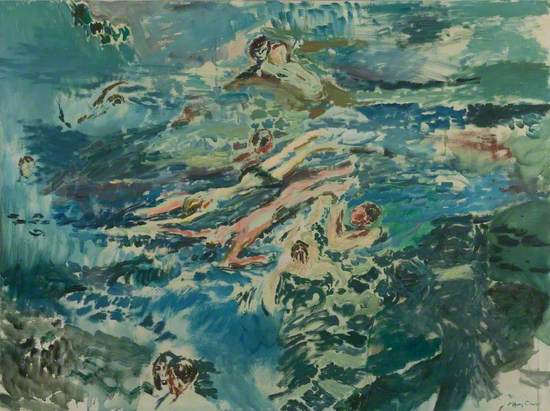Art has rarely been more needed than during this time of a global pandemic. Presciently, in 2018, the Sheffield Millennium Gallery staged an exhibition of works from the Fleming Collection, the Ingram Collection and the Jerwood Collection, which explored, largely through work chosen from the 20th century, art’s capacity to stir our emotions from deepest despair to unbridled joy. Its title, 'Darkness into Light', sums up today’s febrile mood, which is why the Fleming Collection has reprised an online version of this exhibition.
Darkness
The artists in this section communicate difficult emotions, whether on the topic of global events of economic depression, world war or a refugee crisis, or instead turning to inner fears, angst and insecurities. It is these often disconcerting images that help us to consider how artists reflect on the darker side of human existence.
Howson studied at art school but left after a year to join the army. After a short stint he returned to Scotland vowing never to hold a gun again. This work was made in 1992, the year Howson was commissioned to record the horrific conflicts occurring in the former Yugoslavia at the time. The title, The Brink, describes the anxiety of the unknown, as the female subject on the edge of the cliff considers something the unknown before her. It could be read with a sense of hope or despair for what is to come next.
As a founding member of the Vorticist group Nevinson was interested in the relationship between art and the Machine Age. He was one of the first war artists to draw from an aerial perspective. Here he mixes graphic design and elements of perspective to illustrate individual soldiers, the mass of an army, and the vastness of the war effort in a single image. The sheer mass of detail in these images mirrors the overwhelming experience of modern warfare.
Christopher Richard Wynne Nevinson (1889–1946)
Drypoint on paper
H 20.2 x W 15 cm
The Ingram Collection of Modern British and Contemporary Art
This image of two mounted warriors depicts the famous episode in Scottish history when, in 1314, the English knight Sir Henry de Bohun attacked Robert the Bruce, unsuccessfully, at the start of the Battle of Bannockburn. The style of the painting owes much to the Vorticist movement in the dynamic forms and energy of the painting. In the nostalgia of the subject, the painting seems to be a less negative depiction of war, because of the distance between the contemporary viewer and the event.
Eric Harald Macbeth Robertson (1887–1941)
Oil on canvas
H 68.5 x W 86.5 cm
The Fleming Collection
This work shows builders working in Princes Street, Edinburgh. Although the subject matter is everyday, at the time, painted in 1947, it would have sparked memories of the horrors of war as the trench and the smoke in the background are reminiscent of such an environment.
Ernest Stephen Lumsden (1883–1948)
Oil on canvas
H 50.7 x W 61 cm
The Fleming Collection
Rae makes abstract paintings that do not aim to represent the real world; their subject is their own composition, colour and painterly technique. Although Rae’s paintings are not intended to be about a topic, her darker paintings communicate many of the emotions explored in this area of the exhibition: anxiety, stress, and unease.
Fiona Rae (b.1963)
Oil on canvas
H 213 x W 152.4 cm
Jerwood Collection
Nicol clearly remembers, as a young child, learning about the Holocaust from his mother and this had a lifelong effect on him. Years later an image of an American train carriage triggered memories on this subject, inspiring him to produce this drawing as part of a larger body of work. The figures are dark and huddled, some emaciated, and all without identity. They appear to be waiting for their fate in a dark and fearful interior.
Brian Nicol (b.1948)
Charcoal & chalk on paper
H 138.5 x W 155.3 cm
The Fleming Collection
.
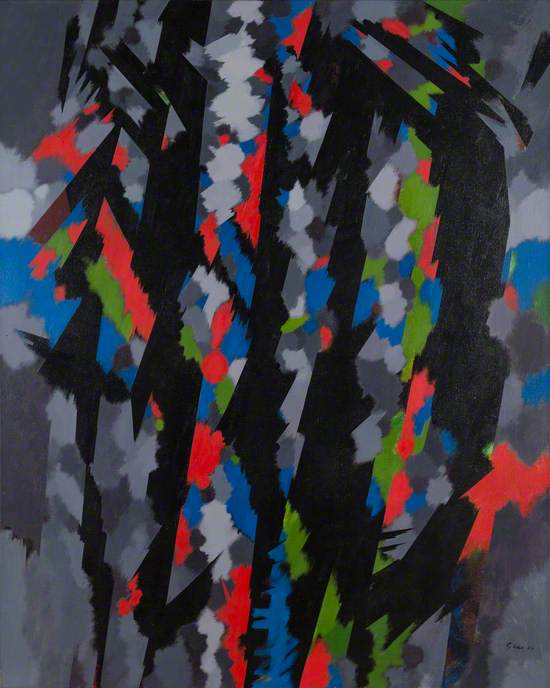
Gear was a member of the CoBrA group of artists, which emphasised quick, impersonal and expressionistic painting. This work shows Gear's use of colour from nature with simple shapes to signify the subject. The painting references the real world but is filtered through imagination and memory. It communicates an anxious landscape with multiple hidden layers almost vibrating with nervous or foreboding energy.
William Gear (1915–1997)
Oil on canvas
H 152.5 x W 122 cm
The Ingram Collection of Modern British and Contemporary Art
.
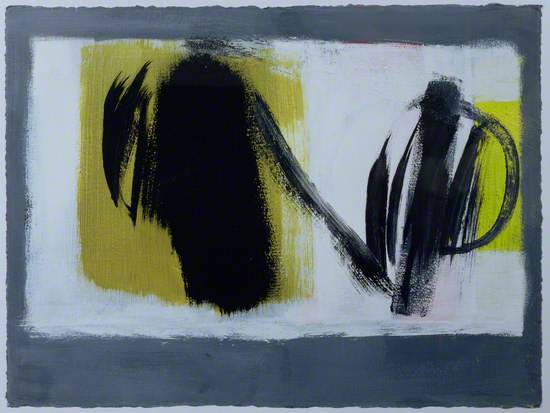
Spanish Elegy
This abstract work appears to be full of conflicting energies and colours but an elegy is typically a funeral song or lamentation for the dead, so the darkness seems to be stronger. The title also relates to Robert Motherwell's series of over 100 paintings numbered as 'Elegy to the Spanish Republic', that commemorated and mourned the human suffering of the Spanish Civil War. They also acted as universal, poetic symbols for the inevitable cycle of life and death.
Wilhelmina Barns-Graham (1912–2004)
Acrylic on Arches paper
H 57 x W 77 cm
The Fleming Collection
.
The title, 'Figures in Motion', sounds like a neutral description, one you would find in modern dance or classical sculpture. This contrasts with the aggressive mark making and contorted figures, one holding a dagger. The figures seem to be engaged in a personal battle.
Elisabeth Frink (1930–1993)
Pen & black ink with coloured ink washes on paper
H 75 x W 51 cm
Jerwood Collection
Currie’s paintings investigate death, decay and morality. In this work the doctor seems deep in thought; as viewers we are unsure if we are about to be given bad news, or good. The seriousness of the portrait and its dark colours give a foreboding presence to the doctor, reminding us that his career deals with life and death.
Ken Currie (b.1960)
Charcoal & pastel on paper
H 49 x W 37 cm
The Fleming Collection
.
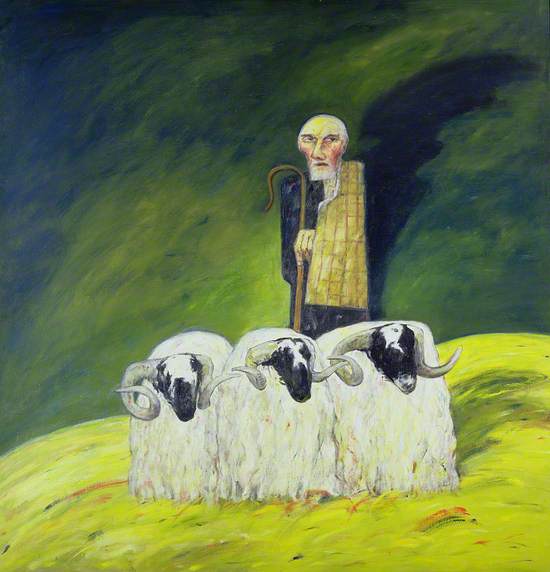
On a cultural exchange in 1967, Bellany visited the Buchenwald concentration camp. The influence this has on the artist can be seen in his exploration of the bleakness of the human condition through his art. In this painting the subject is the 19th century writer and shepherd James Hogg. His dark shadow and the acrid colours of the landscape suggest a landscape of anxiety, reflecting the contemporary troubles of mass emigration caused by the Highland Clearances.
John Bellany (1942–2013)
Oil on canvas
H 154.9 x W 151.1 cm
The Fleming Collection
This painting also deals with the Highland Clearances, a series of evictions of a large numbers highland tenants over the course of a century that were particularly ruthless in the first half of the 19th century. 'Lochaber No More' was painted a year after riots against the impact of the clearances on the Isle of Skye. A couple rest, in thoughtful despair, on a ship beside all their worldly belongings, leaving their home behind. The title references a well known highland lament by the 18th century poet Allan Ramsay.
John Watson Nicol (1856–1926)
Oil on canvas
H 109.2 x W 83.8 cm
The Fleming Collection
The artist Iman Tajik was granted refugee status in Glasgow in 2012, having fled Iran. Three years later, Tajik travelled the the Calais 'Jungle' refugee camp to provide aid, whilst also beginning on this photography project. His approach was informed by his own experience as a refugee, choosing not to photograph the faces of subjects so as not to impress their personal suffering on the viewer but to encourage an empathetic response.
After years of making abstract work Johnstone returned to representational painting in his later life. This self-portrait from three years before the artist's death blends the abstraction of his youth with a portrait that seems to have the life ebbing out of it as we view it.
William Johnstone (1897–1981)
Oil on canvas
H 76 x W 63 cm
The Fleming Collection
Gunn served in the Artist Rifles in World War One. This painting shows the day before the Battle of the Somme, a battle that lasted almost five months and was one of the most violent and devastating battles of the war. Despite this, the scene is serene, depicting simple pleasures of swimming and sunbathing, although the sunbather in the foreground seems to be lying in the position of Christ on the cross, a hint of the sacrifice to come. In this way, the feelings aroused in the viewer are conflicted: there is peace but also foreboding, a grey tone in between the darkness and the light.
Herbert James Gunn (1893–1964)
Oil on canvas
H 83.8 x W 91.4 cm
The Fleming Collection
The Light
The artists displayed in this section take the joy of the landscape, hard work, leisure time and relationships as subject matter: each finds beauty in the everyday. In this way, the artists speak of how their medium can focus on what is positive and commemorate that, whether created in the midst of tragedy as a distraction or in the aftermath of one, as part of a shared emotional and cultural recovery.
Ravilious shows us the clarity of the morning seaside light, the rising sun and reflections in the water below. His depictions of Englishness are now regarded as important to the healing of national wounds in the interwar period.
Eric Ravilious (1903–1942)
Watercolour over graphite on paper
H 42.3 x W 51 cm
The Ingram Collection of Modern British and Contemporary Art
Johnstone was known for vivid depictions of real life using bright colours. In peacetime directly after the end of the First World War, idealised images of the countryside like this became popular. Here the Johnstone's friend and fellow artist, Cecile Walton, poses in a relaxed manner.
Dorothy Johnstone (1892–1980)
Oil on canvas
H 106.7 x W 152.4 cm
The Fleming Collection
Peploe was one of the four famed Scottish Colourists, known for their landscapes and still lives of joyful, expressive colour. After stints in living in Paris, where he was influenced by the 'wild beasts' of Fauvism, he moved back to Edinburgh. In his New Town studio he embarked on a quest to achieve the perfect still-life, arranging tulips, roses, fabrics and other stylish props meticulously. They are full of the beauty of the everyday.
'Five AM' probably depicts art students or models at the painting school which Procter ran with his friend, Harold Harvey, between 1920 and around 1928, in a large studio near the old harbour in Newlyn. They appear to be close friends, lounging and napping over one another perhaps after a party that finished in the early hours of the morning. The models seems at peace, emphasised by the calming colours used.
Wells specialised in landscapes that often featured a low, distant horizon with a single female figure in the foreground. The large expanse of sky above the lone figure here suggests that she might be preoccupied in her thoughts, as she calmly goes about her everyday chores. She seems almost at one with the nature around her in the similarity of colours and tones. It is a beautifully tranquil scene.
William Page Atkinson Wells (1872–1923)
Oil on canvas
H 50.2 x W 39.4 cm
The Fleming Collection
.
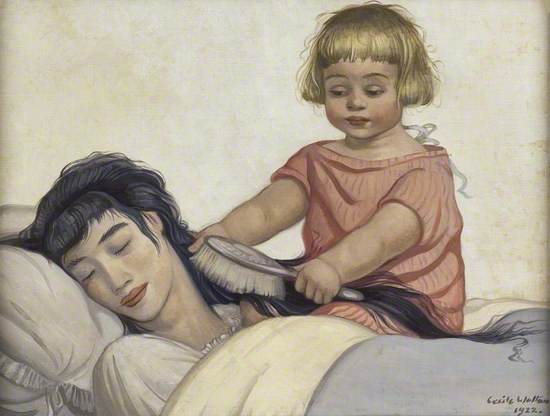
This was painted when Walton was happily living in an artist colony at Kirkcudbright, next door to her friend Dorothy Johnstone. The painting is an idealised self-portrait with the artist's son Gavril, showing their close bond and the ease of their relationship. There is a dreamlike quality to the work.
.

This portrait of an unknown sitter, thought to be a local girl from Newlyn, shows the clarity of drawing, perception of inner emotion and cold grey light the artists of the Newlyn School, Cornwall, came to be known for. There is a calmness and sense of peace in the study.
.
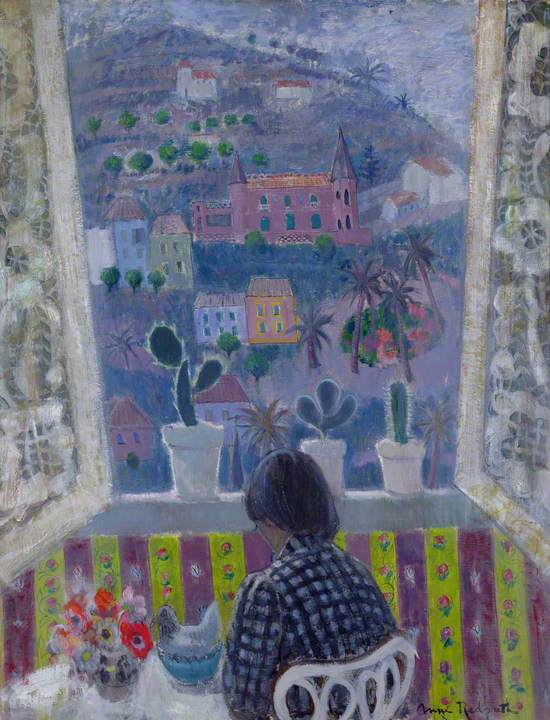
This work is based on a visit to the French Riviera and shows her daughter-in-law Eileen relaxing by an open window. The work is reminiscent of Matisse’s paintings of windows; both artists celebrated colour, shape and the everyday. There is a familiar element of hope in the motif of the open window.
Anne Redpath (1895–1965)
Oil on plywood
H 90.2 x W 81.2 cm
The Fleming Collection
This abstract work uses colour and shape in an almost childlike way. The artist’s passion for colour and movement is clear in the joyous composition.
.
This mural was produced for the Dome of Discovery in the Festival of Britain. There are no known surviving images of the original mural. The Festival was designed to celebrate progress and heal the nation after the Second World War. The mural shows Theseus, a Greek hero, who killed the Minotaur, and reunified Athens. When his ghost appeared before a major victory, he became a popular symbol of good luck, victory, and cultural change.
John Keith Vaughan (1912–1977)
Oil on board
H 41.9 x W 191 cm
The Ingram Collection of Modern British and Contemporary Art
.
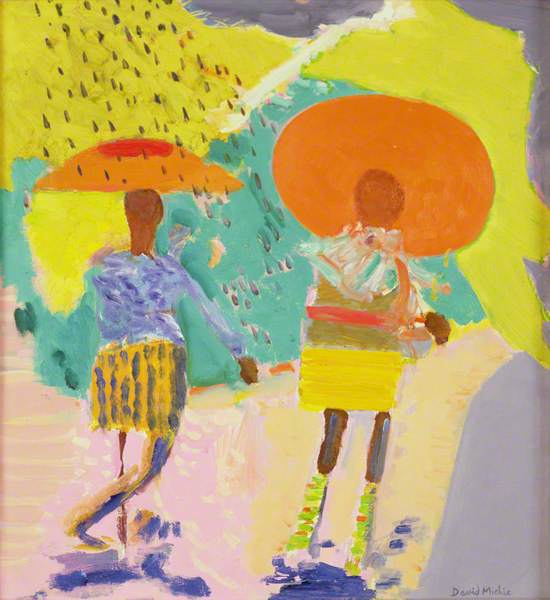
Michie painted the everyday and found joy in the mundane. This playful work celebrates friendship and is a positive and empowering image of black women.
David Alan Redpath Michie (1928–2015)
Oil on canvas
H 44.4 x W 42 cm
The Fleming Collection
The depiction of farm labourers harvesting in bright tones celebrates the rewards of work. Sutherland painted this on his return from the Second World War; many believe the painting also represents a time of hope and positivity for the future.
David Macbeth Sutherland (1883–1973)
Oil on panel
H 30.4 x W 37.4 cm
The Fleming Collection
Fergusson spent much of his artistic career in France, whether for his artistic training or later on with the dancer and his lifelong partner Margaret Morris. In the peacetime after WWI, Morris held dance summer schools in French resorts, including Dinard in 1920 where Fergusson taught art. There is a decorative rhythm in this watercolour, capturing his love of France and the idyll of holidays and peacetime.
John Duncan Fergusson (1874–1961)
Watercolour on paper
H 14.6 x W 19.1 cm
The Fleming Collection
This work was painted en plein air at Oulton Broad in Suffolk, close to where the artist was born. The scene shows families playing in the pool enjoying their leisure time. Camp has produced a work that sits between abstraction and representation. The bodies merge in and out of the paint as they are submerged in water.
.

Blackadder is well known for her paintings, often watercolours, of flowers and cats. They often break with the traditional organised space of still lives, as in this example in which she arranges the objects against a flattened background. It appears to be a painting that takes pleasure in objects that are found in our homes everyday.
Elizabeth V. Blackadder (1931–2021)
Watercolour on paper
H 76.2 x W 95.8 cm
The Fleming Collection
Ainsley's painting inspired the banner for the 1987 ground-breaking exhibition 'The Vigorous Imagination', held at the Scottish National Gallery of Modern Art. The painting refers to the fate of the patriarchy of "male agression, male competitivenss and male greed", as the warrior woman is "bursting free to be true to her own self." It is triumphant and powerful.
Explore artists in this Curation
View all 31-
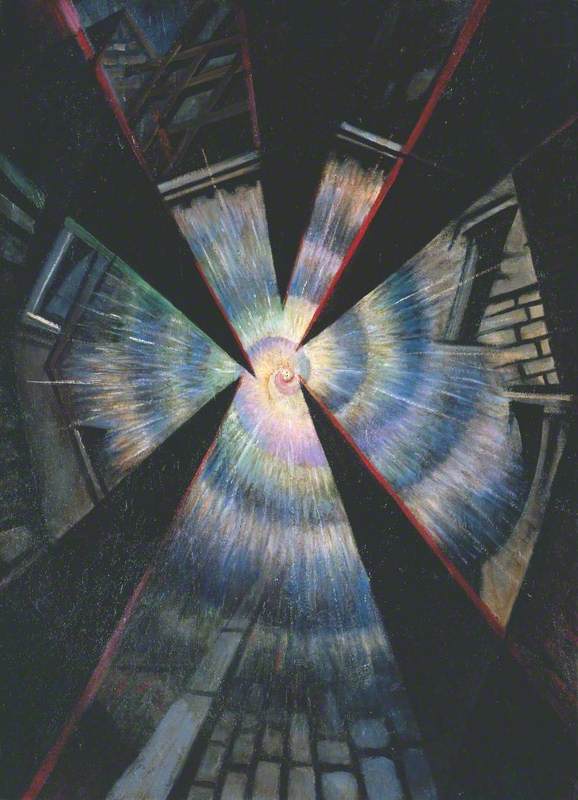 Christopher Richard Wynne Nevinson (1889–1946)
Christopher Richard Wynne Nevinson (1889–1946) -
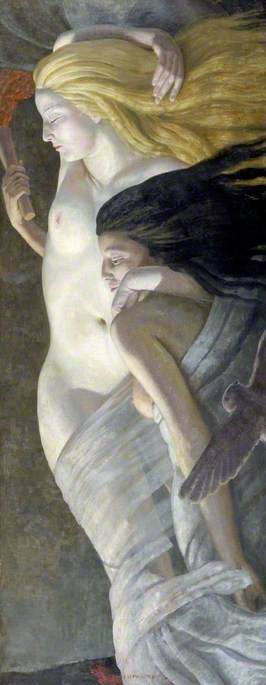 Ernest Procter (1886–1935)
Ernest Procter (1886–1935) -
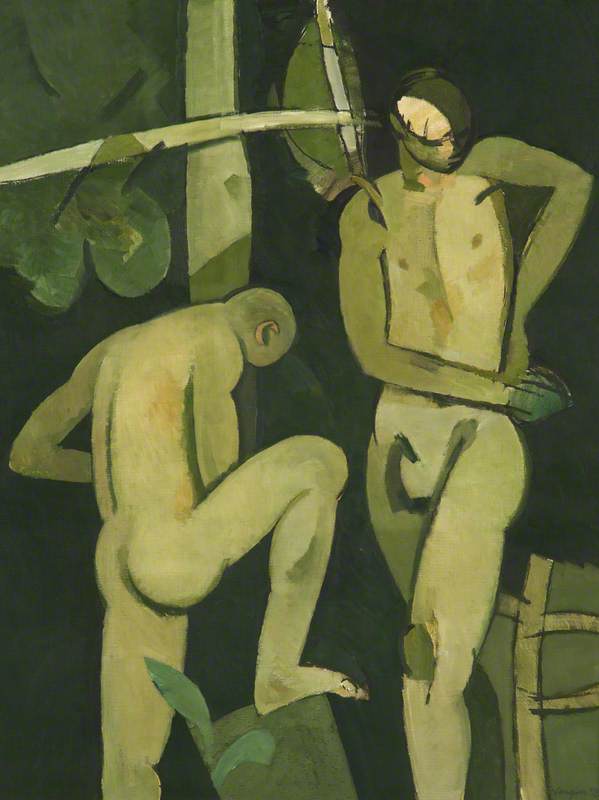 John Keith Vaughan (1912–1977)
John Keith Vaughan (1912–1977) -
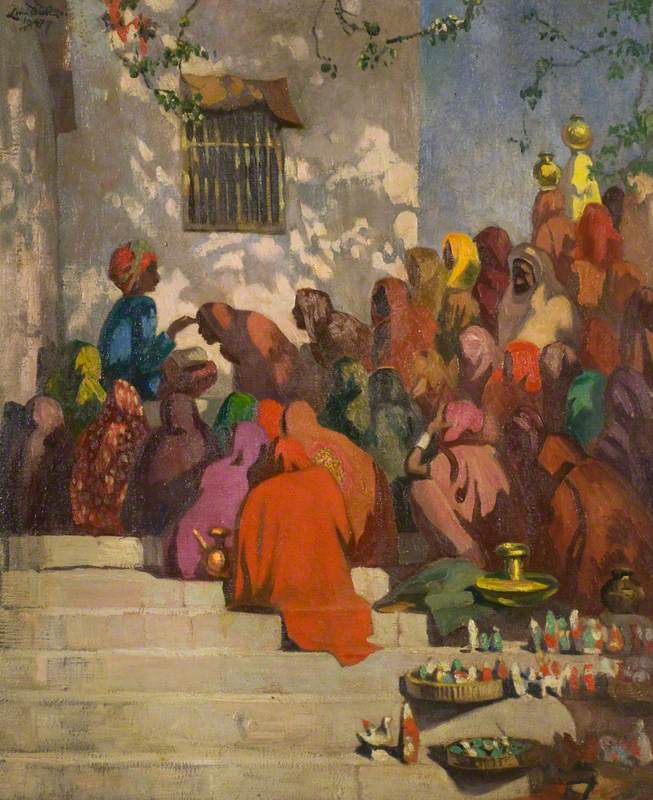 Ernest Stephen Lumsden (1883–1948)
Ernest Stephen Lumsden (1883–1948) -
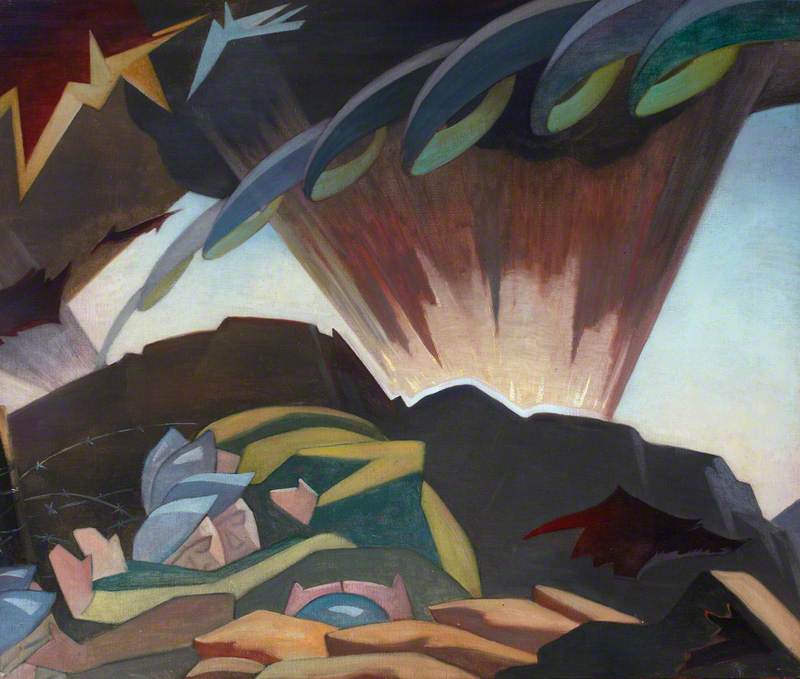 Eric Harald Macbeth Robertson (1887–1941)
Eric Harald Macbeth Robertson (1887–1941) -
 Ken Currie (b.1960)
Ken Currie (b.1960) -
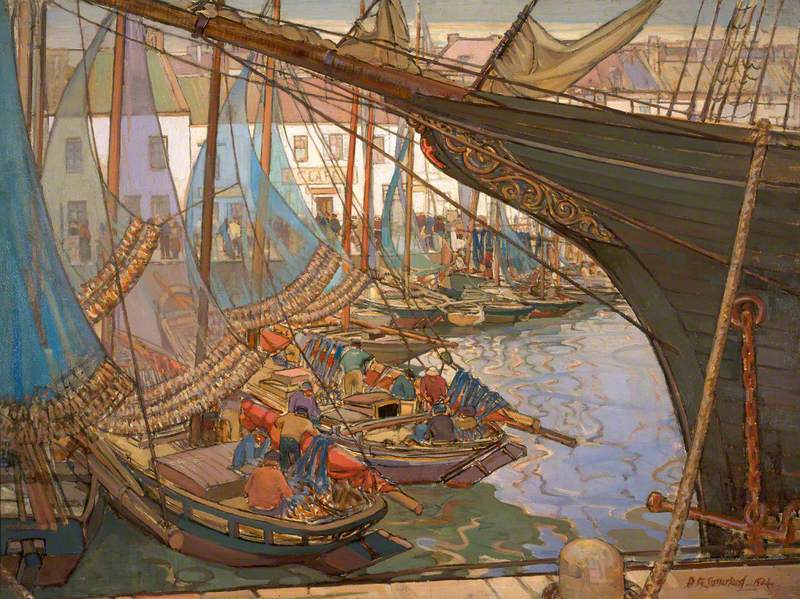 David Macbeth Sutherland (1883–1973)
David Macbeth Sutherland (1883–1973) -
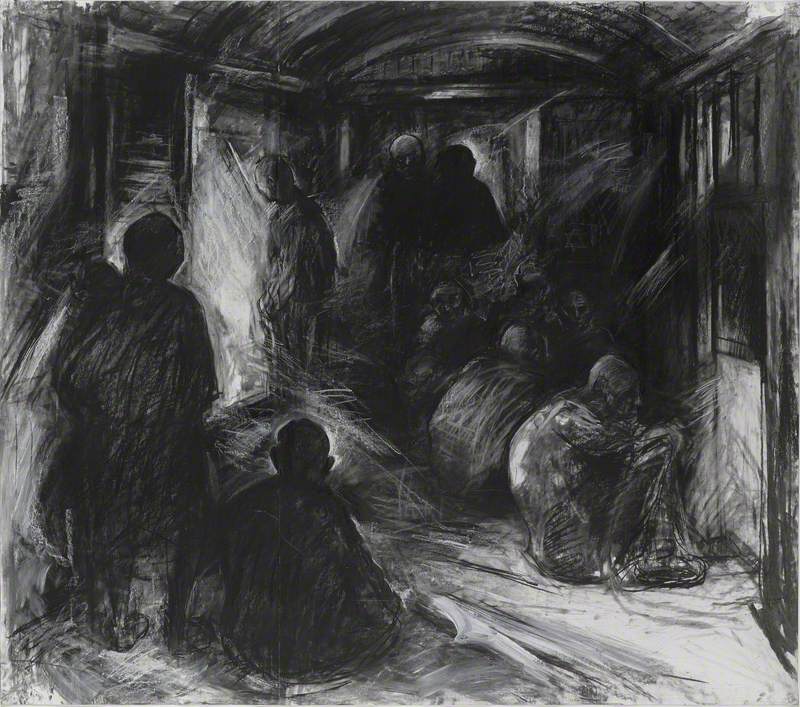 Brian Nicol (b.1948)
Brian Nicol (b.1948) -
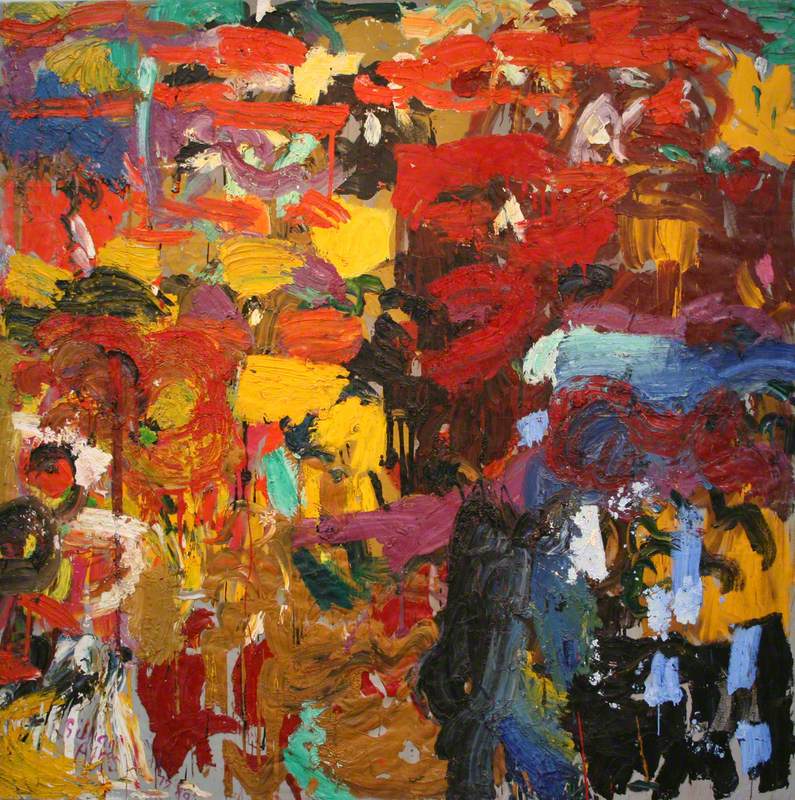 Gillian Ayres (1930–2018)
Gillian Ayres (1930–2018) -
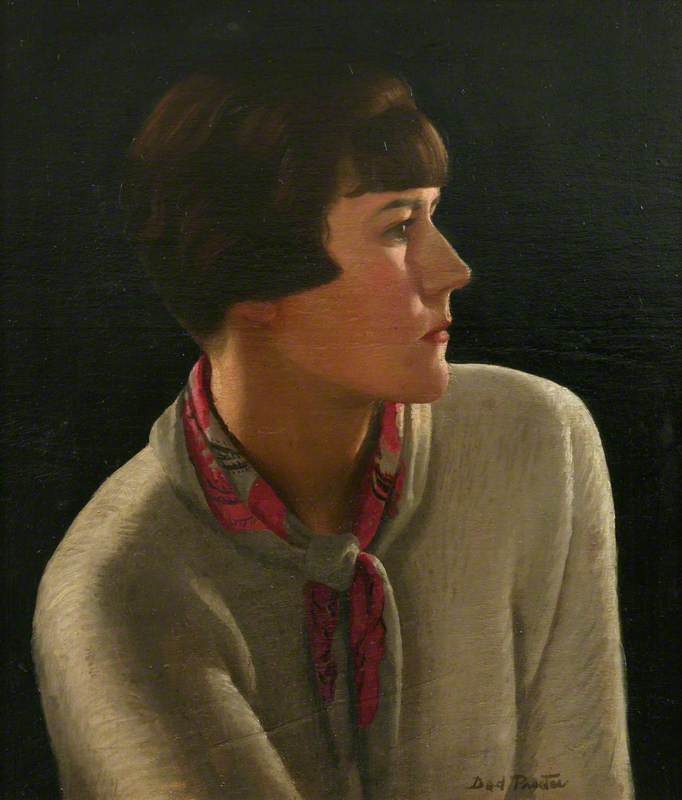 Dod Procter (1892–1972)
Dod Procter (1892–1972) - View all 31
